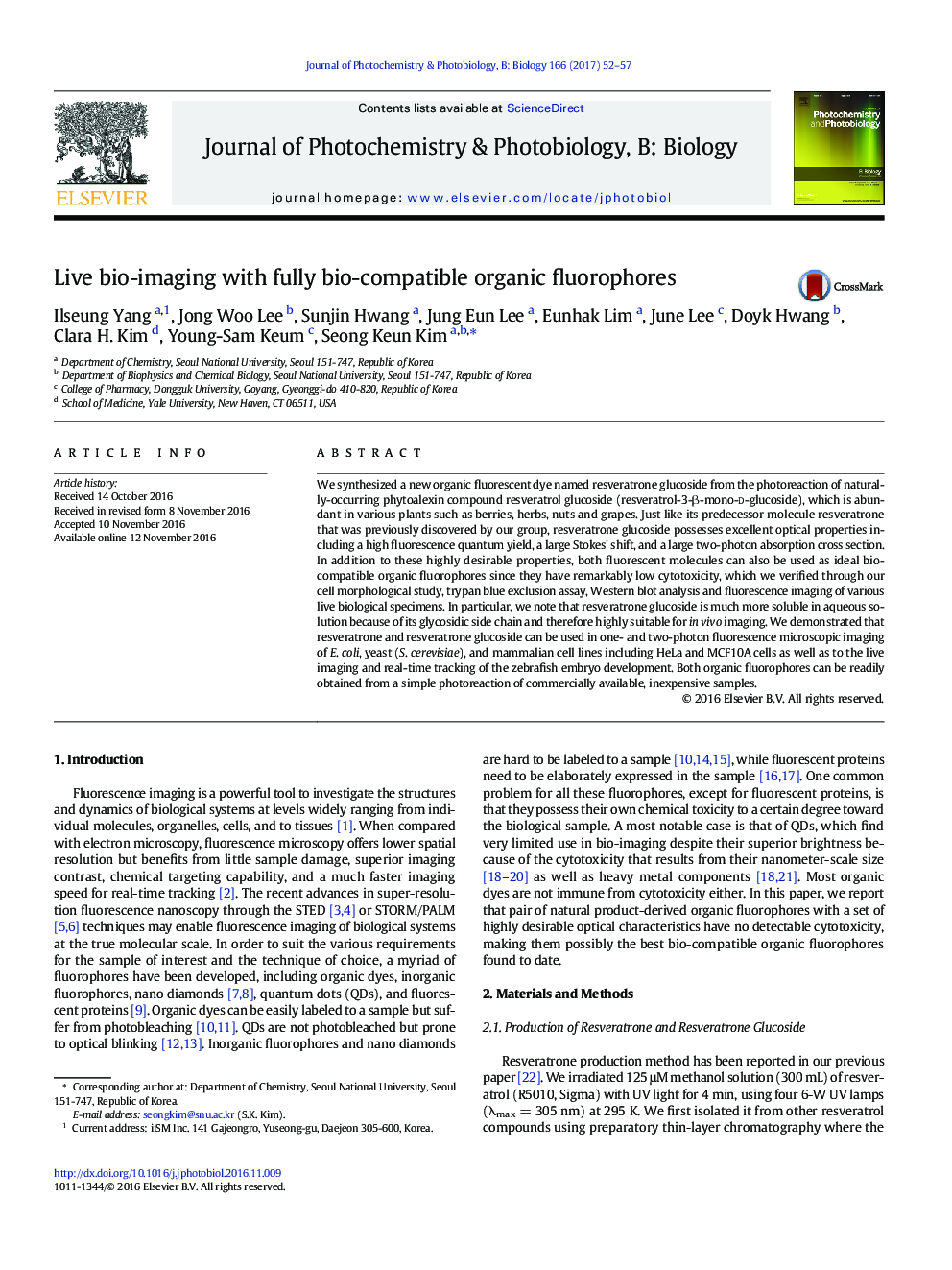| Article ID | Journal | Published Year | Pages | File Type |
|---|---|---|---|---|
| 4754558 | Journal of Photochemistry and Photobiology B: Biology | 2017 | 6 Pages |
â¢Novel organic fluorophores readily produced from a photoreaction of inexpensive natural productsâ¢Excellent optical properties in addition to two-photon absorption capabilityâ¢One- and two-photon fluorescence microscopic imaging of various biological specimensâ¢Good biocompatibility because of little cytotoxicity
We synthesized a new organic fluorescent dye named resveratrone glucoside from the photoreaction of naturally-occurring phytoalexin compound resveratrol glucoside (resveratrol-3-β-mono-d-glucoside), which is abundant in various plants such as berries, herbs, nuts and grapes. Just like its predecessor molecule resveratrone that was previously discovered by our group, resveratrone glucoside possesses excellent optical properties including a high fluorescence quantum yield, a large Stokes' shift, and a large two-photon absorption cross section. In addition to these highly desirable properties, both fluorescent molecules can also be used as ideal bio-compatible organic fluorophores since they have remarkably low cytotoxicity, which we verified through our cell morphological study, trypan blue exclusion assay, Western blot analysis and fluorescence imaging of various live biological specimens. In particular, we note that resveratrone glucoside is much more soluble in aqueous solution because of its glycosidic side chain and therefore highly suitable for in vivo imaging. We demonstrated that resveratrone and resveratrone glucoside can be used in one- and two-photon fluorescence microscopic imaging of E. coli, yeast (S. cerevisiae), and mammalian cell lines including HeLa and MCF10A cells as well as to the live imaging and real-time tracking of the zebrafish embryo development. Both organic fluorophores can be readily obtained from a simple photoreaction of commercially available, inexpensive samples.
Graphical AbstractNew biocompatible fluorophores for live imaging: We discovered a novel, highly fluorescent molecule (named “resveratrone-glucoside”) generated by simple UV irradiation. The resveratrone glucoside and its predecessor molecule resveratrone have large Stokes' shifts, high fluorescence quantum yields, one- and two-photon emission characteristics and little cytotoxicity. In particular, the glucosidic side group of resveratrone glucoside makes it highly soluble in aqueous solution and ideally suited for in vivo imaging.Download high-res image (104KB)Download full-size image
